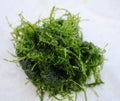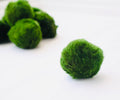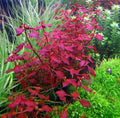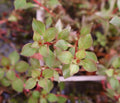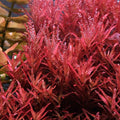Can Tannin Harm Aquatic Plants?
Tannins, those that we see as brown extract, are often misunderstood. They just do not alter the water chemistry; they also play a big role in plant growth, nutrient uptake, and even algae control. So you might be wondering if they are good or bad for aquatic plants. The truth is more than a simple yes or no.
What Are Tannins?
Tannins are brown-producing organic compounds found in leaves, seed pods, and driftwood. When introduced into your aquarium—especially in blackwater setups—they gradually give it a brown or amber hue. It releases humic and fulvic acids that help lower the pH of the water. These acids also bind with essential metals such as iron and manganese, keeping them in a form that’s more bioavailable to aquatic plants.
Positive Effects of Tannins on Plant Growth
Many aquatic plants benefit from enhanced nutrient uptake in a slightly acidic environment. Iron, essential for chlorophyll production, becomes more accessible.
Manganese, crucial for plant metabolism and enzyme activation, is also more easily absorbed. This results in healthier plants, improved coloration, and stronger photosynthesis.
The slightly acidic water that tannins create can also suppress harmful pathogens, inhibit algae growth, and create a more balanced, low-competition environment for your chosen plant.
Potential Drawbacks of Tannins on Plant Growth
Despite the benefits, tannins aren’t a universal solution. While they enhance iron and manganese availability, the lowered pH may reduce the solubility of other key nutrients, such as Calcium and Magnesium. This can lead to nutrient deficiencies in plants that rely on higher levels of these minerals or prefer neutral to slightly alkaline water conditions. So what’s the solution? Plant selection becomes critical.
Best Plants for Tannin-Rich Water
Some plants are naturally adapted to the low light, low pH, and nutrient dynamics of blackwater environments. Here are the top choices:
1. Java fern is very hardy and beginner-friendly. It thrives in low light and acidic pH. It easily attaches to hardscape like driftwood—making it ideal for blackwater tanks.
2. Cryptocoryne is adapted to low-pH, low-light environments. It is a slow-growing but highly resilient plant. It offers a lush, natural look with its varied leaf forms
3. Anubias - another low-maintenance plant. It tolerates a wide range of conditions, including tannin-stained waters. Broad, dark green leaves contrast beautifully with the amber tint of blackwater
These plants have one thing in common: they evolved in environments similar to blackwater ecosystems and are naturally well-suited to these conditions.
Tannins and Plant Competition
Here’s something most aquarists don’t think about: tannins can shift plant dominance in your tank.
By altering nutrient availability and lighting conditions, tannins influence which plants thrive and which struggle. This opens up opportunities for aquascapers to:
1. Create more naturalistic plant hierarchies
2. Promote biodiversity
3. Suppress algae, as reduced nutrient availability affects algae more than adapted aquatic plants
In nature, tannins serve a balancing function, supporting healthy plant communities while limiting opportunistic species like algae.
Tannins vs. Nutrient Availability
While tannins increase access to iron and manganese, they can hinder:
Calcium uptake
Magnesium availability
General buffering capacity (reducing water hardness)
If your plants are showing signs of calcium or magnesium deficiency—such as twisted leaves or stunted growth—you may need to supplement or reconsider plant choices for your blackwater setup.
Conclusion: Are Tannins Good or Bad for Plants?
Tannins can be both a blessing and a challenge for aquatic plants.
Benefits:
- Enhanced iron and manganese availability
- Healthier, more vibrant plant growth (for the right species)
-Suppression of pathogens and algae
- More natural ecosystem dynamics
Drawbacks:
-Reduced calcium and magnesium solubility
- Potential deficiencies in non-adapted species
- Limited plant selection if you're not careful



